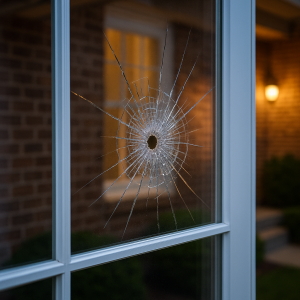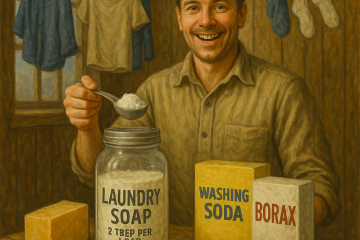
Making your windows stronger against crime
Some folks treat their windows like delicate works of art—pretty to look at, but best not touched by wind, baseballs, or burglars with bad intentions. Others go full “suburban stronghold” with iron bars, blackout curtains, and enough security gadgets to make a Bond villain jealous.
Most of us? We want something in the middle. We want to protect our homes and families without making the neighbors whisper, “Are they building a bunker over there?”
The good news is that today’s window protection technology gives you real defensive muscle without sacrificing your home’s charm. From barely-there films to serious ballistic upgrades, you can scale your security like a pro—and you don’t need a trust fund or a concrete moat to do it.
Part 1: Film — The Unsung Hero of Window Protection
Windows are the weak spot of any home. Beautiful? Yes. Inviting? Absolutely. Easy to smash? Unfortunately, yes. But that doesn’t mean they have to stay that way.
Enter: security window film, the Clark Kent of home defense. It’s not flashy, but when things get tough, it holds the line. These thin, transparent layers of polyester adhere directly to your existing glass and do three magical things:
-
Hold shattered glass together – no flying shards turning your living room into a glitter bomb of danger.
-
Delay entry – it takes longer to punch or smash through a film-reinforced window, which often sends criminals packing.
-
Block UV rays – because security is great, but protecting that expensive couch from sun-fade is nice too.
Think Layered, Like a Seven-Layer Dip
The trick is to think of security as layers, not a single gadget. Film is the first layer — the appetizer platter. It works best when paired with strong locks, alarms, lighting, and good old neighborhood vigilance.
Types of Film You Can Use
-
Clear Safety Film (4–8 mil): Virtually invisible, great for maintaining views.
-
Tinted / Reflective Film: Adds solar control & privacy along with protection.
-
One-Way Privacy Film: Keeps prying eyes out during the day.
-
Heavy-Duty Multi-Layer Film (8+ mil): Slows entry significantly — a burglar’s worst cardio workout.
A well-installed 8 mil film with anchored edges can make a basic window shockingly tough to breach with hand tools. But — and here’s the myth-busting moment — no film is “bulletproof.”
It can hold broken glass together after impact, but it doesn’t stop bullets. Which brings us to…
Part 2: Bulletproof(ish) — What Actually Works Against Bullets
The internet is full of tall tales: “Just slap on this film and your window will stop an AR-15.”
Spoiler alert: it won’t. Even the best security film is like a seatbelt—it mitigates damage, but it won’t stop the crash.
If you truly want bullet resistance, you have to step into glass + film + frame reinforcement territory. And yes, it’s totally doable for homeowners who want extra protection in key areas (without mortgaging their house to armor their house).
Step 1: Laminated Glass
Think of this as your windows going to the gym. Laminated glass sandwiches a tough plastic interlayer between two sheets of glass. It’s what car windshields use, and it’s excellent at absorbing impact and staying intact.
-
Stops smash-and-grab attempts cold.
-
Slows or even deflects handgun rounds depending on thickness.
-
Looks just like normal glass.
-
Plays very well with security film — film on top of laminated glass is a chef’s kiss combo.
Step 2: Ballistic Glass / Polycarbonate Hybrids
For the next level, you can install ballistic-rated glazing, usually a mix of glass and polycarbonate. These are the real superheroes:
-
Level 1 (UL 752): Stops 3 shots of 9mm. Usually 1–1.25″ thick.
-
Level 2–3: Stops higher-caliber handguns.
-
Level 4+: Rifle rounds. These systems are thicker, heavier, and more expensive—but absolutely effective.
Ballistic glass doesn’t need to replace every window in your home. Many families choose to reinforce entryways, sidelights, or safe rooms. Some companies even offer retrofit ballistic inserts that fit into existing frames, making this a surprisingly practical upgrade.
Step 3: Reinforce the Frames (Seriously)
Here’s where most DIY efforts go sideways: you install great glass, and then the frame gives way like a bad belt buckle at Thanksgiving dinner.
If the frame isn’t reinforced, a single impact can pop the whole pane out, like toast from a springy toaster. So:
-
Use ballistic-rated frames or retrofit retention systems.
-
“Wet glaze” or anchor the edges of the film and laminated glass to the frame.
-
Make sure your wall structure can handle the weight — ballistic glass is heavy.
Part 3: Smart Strategy Without the Mad Max Aesthetic
You don’t need rifle-rated glass in your laundry room. The smartest approach is selective reinforcement:
-
Front entry & sidelights → prioritized for both forced entry and ballistic protection.
-
Safe room windows → choose laminated or ballistic glass for family refuge areas.
-
Ground floor vulnerable windows → film + laminated glass is usually sufficient.
-
Interior layout → consider how you’d retreat and protect in a threat scenario.
The goal isn’t to build a fortress. It’s to buy time, increase deterrence, and protect your family—all while keeping your home looking like, well, a home.
Security window film is like giving your glass a gym membership—it gets tougher, leaner, and more resilient. Laminated glass is the personal trainer. Ballistic glazing is the black belt. And when you anchor it all together, you end up with a system that can withstand both burglars and ballistics, without scaring the neighbors.
You don’t have to settle for fragile windows or bunker bars. With the right combination of film, glass, and smart reinforcement, you can create a home that’s welcoming on the outside, formidable on the inside.
Because real security isn’t about fear. It’s about freedom with a solid pane of glass between you and trouble.



0 Comments